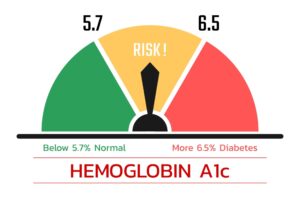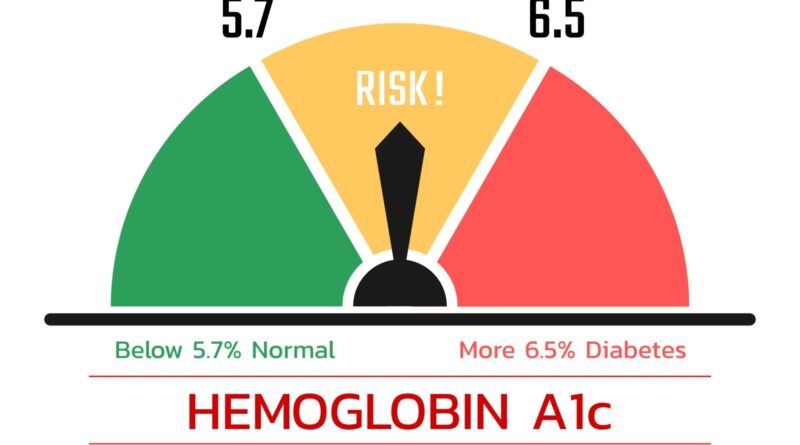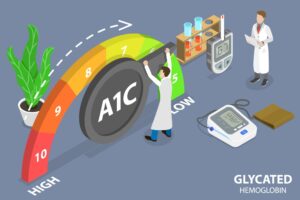hba1c normal range chart | hba1c Test (normal hba1c)
HbA1c Normal Range Chart by age | hba1c Test (normal hba1c)
Advertisement
Looking for a comprehensive HbA1c normal range chart? Discover the ideal HbA1c levels by age with our informative blog. Explore the significance of maintaining a normal HbA1c level and gain insights from our detailed chart. Stay informed about the HbA1c normal range, understand how it varies with age, and achieve optimal health. Get all the necessary information you need in one place – don’t miss out!

Introduction:
The HbA1c normal range chart is a helpful tool for monitoring sugar levels.
1. The Purpose of an HbA1c Normal Range Chart | normal hba1c
An HbA1c normal range chart is a tool used to monitor and assess sugar levels over time, specifically for individuals with diabetes. It provides a visual representation of the average blood glucose levels over the past two to three months. The primary purpose of this chart is to help healthcare professionals and individuals with diabetes understand how well their blood sugar levels are being managed. By using an HbA1c normal range chart, healthcare professionals can determine if a person’s diabetes treatment plan is effective or if adjustments need to be made. For individuals with diabetes, it serves as a guide to track progress and make informed decisions about lifestyle changes, medication adjustments, or other interventions that may be necessary to maintain optimal blood sugar control. This chart also allows for better communication between healthcare professionals and patients. It helps in setting realistic goals and
2. How normal hba1c range Chart Helps in Monitoring Blood Sugar Levels
Advertisement
An HbA1c normal range chart provides valuable information about long-term blood sugar control by measuring the percentage of hemoglobin that has glucose attached to it. This value reflects the average blood glucose levels over the past two to three months since red blood cells have a lifespan of approximately 120 days. By regularly monitoring and referring to an HbA1c normal range chart, individuals with diabetes can gain insights into their overall glycemic control. They can identify trends, patterns, and fluctuations in their blood sugar levels that might not be evident from daily self-monitoring alone. The chart helps individuals understand whether their current treatment plan is effectively managing their diabetes or if modifications are required. If the values consistently fall within the recommended range, it indicates good glycemic control and reduces the risk of diabetes-related complications. On the other hand, consistently high or low values may indicate the need for adjustments in medication, diet, or lifestyle choices. Overall, an HbA1c normal range chart plays a crucial role in monitoring blood sugar levels and assessing the effectiveness of diabetes management strategies. It empowers individuals with diabetes to take control of their health and make informed decisions to maintain optimal glycemic control.
1. Normal Range Categories (updated hba1c ranges for adults)
The HbA1c normal range chart typically includes different categories to indicate the level of blood sugar control. These categories may include:
- Excellent Control: This category represents individuals who have achieved optimal blood sugar control, with HbA1c levels below a certain threshold, usually around 5%.
- Good Control: This category includes individuals who have managed to maintain their blood sugar within an acceptable range, with HbA1c levels between 5% and 6%.
- Fair Control: Individuals falling into this category have moderate blood sugar control, with HbA1c levels ranging from 6% to 7%. It indicates that there is room for improvement in managing blood glucose levels.
- Poor Control: This category represents individuals who have inadequate blood sugar control, with HbA1c levels above 7%. It indicates a higher risk for complications related to diabetes.
2. Ranges Indicative of Diabetes Diagnosis hba1c test
In addition to categorizing blood sugar control, an HbA1c normal range chart may also include ranges that help diagnose diabetes or prediabetes. These ranges can be useful for identifying individuals at risk and initiating appropriate interventions:
a) Prediabetes Range
This range indicates individuals who are at high risk of developing type 2 diabetes. The HbA1c level falls between 5.7% and 6.4%, suggesting impaired glucose metabolism that can progress to diabetes if not addressed through lifestyle modifications.
b) Diabetes Range
This range represents individuals who already have diabetes. The HbA1c level is equal to or above 6.5%, indicating persistent hyperglycemia and the need for ongoing management and treatment.
Advertisement
3. Age-Specific Ranges (normal hba1c by age)
Some HbA1c normal range charts may also include age-specific ranges to account for variations in blood sugar control among different age groups:
- Pediatric Range: This range is applicable to children and adolescents, with target HbA1c levels usually slightly higher than those for adults due to their rapid growth and development.
- Adult Range: This range represents the target hba1c ranges for adults, taking into consideration factors such as overall health, comorbidities, and individual treatment goals.
- Elderly Range: As individuals age, there may be adjustments in the target HbA1c levels to avoid hypoglycemia or excessive glucose fluctuations while maintaining adequate glycemic control.
By providing these categories, ranges, and age-specific considerations within an HbA1c normal range chart, healthcare professionals can better assess a person’s blood sugar control status, make appropriate recommendations, and tailor treatment plans to achieve optimal diabetes management.
4. Understanding HbA1c Levels | hba1c ranges for adults 65
HbA1c, also known as glycated hemoglobin, is a blood test that indicates the average blood sugar levels over the past two to three months. It measures the percentage of hemoglobin that is bound to glucose in the bloodstream. The normal range for HbA1c varies slightly depending on factors such as age and underlying health conditions. Generally, a value between 4% and 5.6% is considered normal for individuals without diabetes.
Factors Affecting HbA1c Levels
Various factors can influence HbA1c levels, including diet, exercise, stress levels, medications, and other medical conditions. For instance, individuals with diabetes aim to keep their HbA1c levels within a specific target range to manage their condition effectively. high hba1c level values indicate poor blood sugar control and may suggest the need for adjustments in treatment plans or lifestyle modifications.
Benefits of Maintaining Norml HbA1c Levels
Advertisement
- Better overall diabetes management: Keeping HbA1c within the normal range helps individuals with diabetes maintain stable blood sugar levels and reduces the risk of complications associated with high or low blood sugar.
- Reduced risk of long-term complications: Consistently maintaining norml HbA1c levels can lower the chances of developing serious complications such as heart disease, kidney damage, nerve damage, and vision problems.
- Improved quality of life: By managing HbA1c levels within the normal range, individuals with diabetes can experience fewer symptoms related to high or low blood sugar and enjoy better physical and emotional well-being.
In conclusion, understanding what constitutes norma HbA1c levels is crucial for individuals with or without diabetes. Regular monitoring of HbA1c levels, along with appropriate lifestyle changes and medical interventions, can help maintain optimal blood sugar control and minimize the risk of complications associated with diabetes. healthcare providers and diabetes researchers
1. Individual Variations
Individual variations can greatly affect the interpretation of an HbA1c normal range chart. Factors such as age, genetics, and ethnicity can influence the level of glycated hemoglobin in individuals. For example, older adults may have higher HbA1c levels due to natural aging processes and decreased kidney function. Genetics also play a role, as some individuals may have genetic variations that affect their blood glucose control. Additionally, certain ethnic groups, such as African Americans and Hispanics, tend to have higher HbA1c levels compared to Caucasians. Therefore, it is important to consider these individual variations when interpreting HbA1c results within the normal range. hba1c ranges for adults 65
Factors contributing to individual variations:
– Age – Genetics – Ethnicity
2. Medical Conditions and Medications
Various medical conditions and medications can impact the interpretation of an HbA1c normal range chart. Certain health conditions like anemia or chronic kidney disease can affect the accuracy of HbA1c measurements. Anemia causes a decrease in red blood cell lifespan, which can result in lower HbA1c values despite elevated blood glucose levels. On the other hand, chronic kidney disease may lead to falsely elevated HbA1c levels due to impaired clearance of glycated hemoglobin by the kidneys. Moreover, certain medications can interfere with HbA1c measurements as well. For instance, high-dose vitamin C supplements can artificially lower your hba1c levels, while corticosteroids or antipsychotic drugs may cause increased glycation of hemoglobin leading to higher readings. It is crucial for healthcare professionals to take into account these medical conditions and medication use when interpreting an individual’s HbA1c results within the normal range. american diabetes association
Medical conditions and medications affecting interpretation:
– Anemia – Chronic kidney disease – High-dose vitamin C supplements – Corticosteroids – Antipsychotic drugs
5. Frequency of Referring to an normal range of hba1c Chart for Monitoring Blood Sugar (glucose level)Levels
Importance of HbA1c Normal Range Chart
An HbA1c normal range chart is a valuable tool for individuals with diabetes to monitor their blood sugar levels over time. This chart displays the target range for HbA1c, which is a measure of blood glucose levels over the past two to three months. By referring to this chart regularly, individuals can assess how well they are managing their diabetes and make necessary adjustments to their treatment plan.
Benefits of Regularly Checking the HbA1c Normal Range Chart
Regularly checking the HbA1c normal range chart offers several benefits for individuals with diabetes: 1. Monitoring Progress: By comparing their current HbA1c levels with the target range on the chart, individuals can track their progress in managing their blood sugar levels. This allows them to identify any patterns or trends that may require adjustments in medication, diet, or exercise. 2. Motivation and Accountability: The visual representation provided by the chart serves as a motivator for individuals with diabetes to strive for better control of their blood sugar levels. It creates a sense of accountability and encourages them to make healthier choices and adhere to their treatment plan more diligently. 3. Early Detection of Issues: Regularly referring to the HbA1c normal range chart helps in early detection of potential issues or complications related to diabetes management. If the results consistently fall outside the target range, it may indicate a need for further medical intervention or lifestyle modifications. 4. Communication with Healthcare Providers: Sharing the information from the HbA1c normal range chart with healthcare providers facilitates effective communication about treatment progress and enables them to provide personalized recommendations based on individual needs. Overall, incorporating regular reference to the HbA1c normal range chart into diabetes management can significantly contribute to better blood sugar control, improved overall health, and reduced risk of complications associated with diabetes.
Benefits of Using an HbA1c Normal Range Chart for Individuals with Diabetes
For individuals with diabetes, an HbA1c normal range chart can be a valuable tool in managing their condition effectively. Firstly, it provides a clear and easily understandable visual representation of the target a1c level. This helps individuals set realistic goals and track their progress over time. By regularly referring to the chart, they can assess whether their current treatment plan is working or if adjustments need to be made.
In addition, an HbA1c normal range chart can serve as a motivational tool for individuals with diabetes. Seeing their HbA1c levels within the desired range can provide a sense of achievement and encourage them to continue making healthy lifestyle choices and adhering to their prescribed medication regimen. It can also help them understand the impact of certain behaviors or habits on their blood sugar control, enabling them to make more informed decisions regarding diet, exercise, and stress management.
This Video Creadit By MediFee.com (Dr Ankush Nayyar) Youtube Chanel
Importance of an hemoglobin a1c Normal Range Chart for Individuals without Diabetes (a1c test)
While an HbA1c normal range chart is primarily associated with diabetes management, it can also be beneficial for individuals without diabetes. One key advantage is that it serves as a preventive measure by raising awareness about the importance of maintaining optimal blood sugar levels. By understanding what constitutes a healthy range and how elevated HbA1c levels may indicate an increased risk of developing diabetes, individuals without the condition can take proactive steps towards preventing its onset.
Furthermore, an HbA1c normal range chart can assist healthcare professionals in identifying potential cases of undiagnosed diabetes or prediabetes in individuals without symptoms. Regular screening using this chart can help detect early signs of abnormal blood sugar control and prompt further diagnostic testing or lifestyle interventions. By catching diabetes is under good control at an early stage, individuals without the condition can receive timely treatment and improve their long-term health outcomes.
Benefits of Using an HbA1c Normal Range Chart:
- Provides a visual representation of target HbA1c levels
- Helps track progress and assess the effectiveness of treatment
- Motivates individuals with diabetes to make healthy choices
- Raises awareness about the importance of blood sugar control for individuals without diabetes
- Aids in early detection of undiagnosed diabetes or prediabetes
- Promotes preventive measures to reduce the risk of developing diabetes
Adult Target Range
The target range for HbA1c levels in adults with diabetes is typically between 6.5% and 7%. This range may vary slightly depending on individual factors such as age, overall health, and the presence of other medical conditions. It is important for adults to aim for a lower HbA1c level within this range if possible, as it has been shown to reduce the risk of long-term complications associated with diabetes.
Children’s Target Range
The target range for HbA1c levels in children with diabetes is generally higher than that of adults. The American Diabetes Association recommends a target range of less than 8% for most children and adolescents. However, individualized targets may be set by healthcare providers based on factors such as the child’s age, developmental stage, duration of diabetes, and presence of any complications. It is important to note that achieving strict control over blood sugar levels can be challenging in children due to their growth and development needs.
Factors Influencing Differences
- Physiological Differences: Children’s bodies are still developing and growing, which can affect their ability to maintain stable blood sugar levels compared to adults.
- Growth and Development: Children require more energy for growth and development, which may result in higher blood sugar levels.
- Tolerance: Children may have a higher tolerance for elevated blood sugar levels compared to adults without experiencing immediate adverse effects.
- Risk-Benefit Balance: Striving for very tight control over blood sugar levels in children may increase the risk of hypoglycemia (low blood sugar) episodes, which can be dangerous.
Overall, it is crucial for both adults and children with diabetes to work closely with their healthcare providers to establish personalized target ranges and develop a comprehensive management plan that takes into account individual needs, health status, and lifestyle factors. Regular monitoring of HbA1c levels and adjustments to treatment plans can help individuals maintain optimal blood sugar control and reduce the risk of complications associated with diabetes.
9.1 Diabetes
For individuals with diabetes, it is important to closely monitor blood sugar levels and make appropriate adjustments to the recommended ranges of certain health metrics. Blood glucose levels, for instance, should be maintained within a specific range to prevent hyperglycemia or hypoglycemia. The target range for fasting blood glucose levels may vary depending on the type and severity of diabetes, as well as individual factors such as age and overall health. It is crucial for diabetic patients to work closely with their healthcare provider to establish personalized target ranges and regularly monitor their blood sugar levels.
Recommended Ranges for Diabetic Patients:
- Fasting Blood Glucose: 80-130 mg/dL (4.4-7.2 mmol/L)
- HbA1c (Glycated Hemoglobin): Less than 7%
- Blood Pressure: Below 140/90 mmHg
- Cholesterol: LDL cholesterol below 100 mg/dL (2.6 mmol/L)
9.2 Hypothyroidism
Hypothyroidism is a condition characterized by an underactive thyroid gland that affects the body’s metabolism. Individuals with hypothyroidism often experience weight gain, fatigue, and other symptoms related to a slow metabolism. Maintaining appropriate ranges for certain health markers can help manage the condition effectively.
Recommended Ranges for Hypothyroid Patients:
- TSH (Thyroid-Stimulating Hormone): Between 0.5-4 mIU/L
- T4 (Thyroxine): Within the normal reference range provided by the laboratory
- Cholesterol: LDL cholesterol below 130 mg/dL (3.4 mmol/L)
It is essential for individuals with hypothyroidism to regularly consult with their healthcare provider, as medication dosage adjustments may be necessary to maintain optimal thyroid hormone levels.
9.3 High Blood Pressure Medications
Patients who are prescribed medications to manage high blood pressure need to pay attention to certain health metrics and make adjustments accordingly. These medications aim to lower blood pressure and maintain it within a healthy range.
Recommended Ranges for Individuals on High Blood Pressure Medications:
- Blood Pressure: Below 130/80 mmHg
- Potassium Levels: Regular monitoring is crucial, as some blood pressure medications can affect potassium levels in the body.
- Sodium Intake: Restricting sodium intake to less than 2,300 mg per day (or even lower depending on individual circumstances) can help manage blood pressure more effectively.
It is important for patients taking high blood pressure medications to follow their healthcare provider’s instructions closely and regularly monitor their blood pressure levels at home or through scheduled check-ups. Adjustments in medication dosage may be required based on these readings. Please note that the provided ranges and recommendations are general guidelines, and individual variations may exist based on specific medical conditions, severity of the condition, medications prescribed, and other factors. It is always advised to consult with a healthcare professional for personalized guidance and target ranges tailored to one’s unique circumstances.
Understanding HbA1c Levels | a1c a1c level
In order to effectively use an HbA1c normal range chart to guide treatment decisions for diabetes patients, healthcare professionals must first understand what HbA1c levels represent. hemoglobin a1c test, or glycated hemoglobin, is a measure of the blood glucose levels over the past two to three months. It provides valuable information about a patient’s long-term blood sugar control and can help determine the effectiveness of their diabetes management plan. The American Diabetes Association (ADA) recommends maintaining an HbA1c level below 7% for most adults with diabetes.
Interpreting the HbA1c Normal Range Chart
The HbA1c normal range chart serves as a reference tool for healthcare professionals to assess a patient’s blood sugar control and make appropriate treatment decisions. The chart typically categorizes different HbA1c levels into ranges that indicate varying degrees of glycemic control. For example, an HbA1c level between 5% and 6% is considered normal or non-diabetic, while levels above 9% are indicative of poor blood sugar control. By referring to this chart, healthcare professionals can identify whether a patient’s current treatment plan needs adjustment or if additional interventions are necessary. Using the HbA1c normal range chart in conjunction with other clinical factors such as age, overall health status, and individualized treatment goals allows healthcare professionals to tailor treatment plans specifically for each diabetes patient. It helps them determine whether medication adjustments, lifestyle modifications, or intensified monitoring are needed to achieve optimal glycemic control and reduce the risk of complications associated with diabetes. Some key points to consider when using an HbA1c normal range chart include: – Each patient’s target range may vary based on their specific circumstances. – Regular monitoring of HbA1c levels is essential to track progress and make informed treatment decisions. – The chart should be used as a guide, but individual patient factors should also be taken into account when determining treatment plans. By utilizing an HbA1c normal range chart effectively, healthcare professionals can play a crucial role in helping diabetes patients manage their condition and improve their overall health outcomes.
Understanding HbA1c
HbA1c, also known as glycated hemoglobin, hba1c blood test that provides an average measurement of a person’s sugar levels over the past two to three months. It is particularly useful in monitoring and managing diabetes. The HbA1c normal range chart is a graphical representation that allows individuals to observe fluctuations in their sugar levels over time. By tracking these fluctuations, individuals can gain insights into how well they are managing their diabetes and make necessary adjustments to their treatment plans.
Interpreting the HbA1c Normal Range Chart
The HbA1c normal range chart typically displays different ranges of sugar levels, people with diabetes categorized as normal, prediabetes, and diabetes. The chart may also include target ranges for individuals with diabetes based on their specific treatment goals. By comparing their own HbA1c results to the chart, individuals can determine if their blood sugar control falls within the desired range or if it requires improvement. This visual representation helps healthcare providers and patients have meaningful discussions about treatment plans and lifestyle modifications necessary to achieve optimal blood sugar control. Some key benefits of using an HbA1c normal range chart include: – Identifying trends: By observing fluctuations in blood sugar levels over time, individuals can identify patterns or trends that may impact their overall health and diabetes management. – Motivating behavior change: Seeing progress or setbacks on the chart can motivate individuals to make positive changes in their diet, physical activity level, medication adherence, or other aspects of diabetes management. – Facilitating communication with healthcare providers: The visual representation provided by the chart makes it easier for individuals to discuss their blood sugar control with healthcare providers and seek appropriate guidance for any necessary adjustments to their treatment plan. In conclusion, utilizing an HbA1cnormal range chart allows individuals with diabetes to track their blood sugar levels over time and gain valuable insights into their diabetes management. By understanding and interpreting the chart, individuals can make informed decisions about their treatment plans, leading to better blood sugar control and overall health.
6. Guidelines and Recommendations for Interpreting and Using an HbA1c Normal Range Chart Effectively
Understanding the HbA1c Normal Range
To effectively interpret and use an HbA1c normal range chart, it is crucial to understand what HbA1c represents. Hemoglobin A1c (HbA1c) is a measure of average blood glucose levels over the past two to three months. It provides valuable information about long-term glycemic control in individuals with diabetes. The normal range for HbA1c varies depending on factors such as age, overall health, and the presence of any diabetes-related complications.
Factors Influencing the Normal Range
Several factors can influence the normal range of HbA1c. These include age, comorbidities, treatment goals, and individual patient preferences. For younger individuals without complications or other health conditions, a lower HbA1c target may be appropriate to minimize the risk of long-term complications associated with diabetes. On the other hand, older adults or those with multiple comorbidities may have higher target ranges to avoid hypoglycemia or other adverse events.
- Age: Younger individuals may have stricter targets than older adults.
- Comorbidities: Presence of other health conditions may affect the target range.
- Treatment Goals: Individual treatment goals should be considered when interpreting the chart.
- Patient Preferences: Patient preferences and lifestyle choices should also be taken into account.
Using an HbA1c Normal Range Chart Effectively
To make the most out of an HbA1cnormal range chart, healthcare professionals and patients should follow certain guidelines and recommendations:
Regular Monitoring and Follow-up
It is essential to regularly monitor a1c levels and have follow-up appointments with healthcare providers. This allows for timely adjustments in treatment plans, medication dosages, or lifestyle modifications to maintain optimal glycemic control.
Individualized Approach
Every patient is unique, and their diabetes management should be tailored accordingly. When using an HbA1c normal range chart, it is important to consider individual factors such as age, overall health, comorbidities, and treatment goals to set appropriate targets.
Collaboration between Healthcare Provider and Patient
Successful diabetes management requires a collaborative approach between healthcare providers and patients. Patients should actively participate in decision-making processes regarding their treatment plans based on the interpretation of the a1c normal range chart. Open communication and shared decision-making contribute to better adherence and improved outcomes.
- Regular monitoring of a1c levels.
- Timely adjustment of treatment plans based on results.
- Tailoring targets according to individual factors.
- Patient involvement in decision-making processes.
By following these guidelines and recommendations, healthcare professionals can effectively interpret and utilize an HbA1c normal range chart to guide diabetes management decisions for their patients. Similarly, patients can gain a better understanding of their glycemic control status and actively participate in achieving their treatment goals.
Health Risks
Consistently falling outside the recommended ranges on an a1c normal range chart can have serious health consequences. High levels of HbA1c indicate poor blood sugar control, which increases the risk of developing complications related to diabetes. These complications include cardiovascular disease, kidney damage, nerve damage, and eye problems such as diabetic retinopathy. Additionally, uncontrolled sugar level can weaken the immune system, making individuals more susceptible to infections.
Impact on Quality of Life
Failing to maintain optimal HbA1c levels can significantly impact a person’s quality of life. Uncontrolled diabetes can lead to chronic fatigue, frequent urination, excessive thirst, and unexplained weight loss or gain. These symptoms can affect daily activities and overall well-being. Moreover, individuals with consistently high a1c levels may experience mood swings and difficulty concentrating due to fluctuating blood sugar levels.
Financial Burden
The consequences of consistently falling outside the recommended ranges on an a1c normal range chart also extend beyond health implications. Poorly managed diabetes often requires frequent medical visits, additional medications or insulin injections, and specialized care from healthcare professionals. All these factors contribute to increased healthcare costs and financial burden for individuals living with diabetes.
Tips for Maintaining Optimal HbA1c Levels:
– Regularly monitor blood glucose levels using a glucometer. – Follow a well-balanced diet that includes whole grains, lean proteins, fruits, and vegetables. – Engage in regular physical activity or exercise as prescribed by a healthcare professional. – Take medications or insulin as prescribed by the doctor. – Attend regular check-ups with healthcare providers to assess progress and make necessary adjustments to treatment plans. – Seek support from international diabetes federation educators or support groups for guidance and motivation in managing blood sugar levels.
Factors Affecting Accuracy and Reliability
Several factors can influence the accuracy and reliability of values presented on an a1c normal range chart. One crucial factor is the method used for measuring a1c levels. Different laboratories may use different methods, leading to variations in results. It is essential for healthcare professionals to use standardized and validated methods to ensure consistency in measurements.
Another factor that can affect accuracy is the presence of certain medical conditions or substances in the body. For example, individuals with certain types of glycated hemoglobin test variants may have inaccurate HbA1c readings. Additionally, conditions such as chronic kidney disease or iron deficiency anemia can also impact the reliability of HbA1c values.
The Importance of Quality Control Measures
To ensure accuracy and reliability, quality control measures must be implemented during the testing process. These measures include regular calibration of equipment, proficiency testing, and adherence to standard operating procedures. Quality control programs help identify any potential errors or variations in test results, allowing for corrective actions to be taken promptly.
Furthermore, it is crucial for healthcare professionals to interpret HbA1c values within the context of each individual’s unique circumstances. Factors such as age, ethnicity, comorbidities, and medication use should be considered when assessing glycemic control using HbA1c measurements. This personalized approach helps provide a more accurate representation of an individual’s diabetes management.
List: Factors influencing accuracy and reliability:
- Variations in measurement methods
- Presence of hemoglobin variants
- Medical conditions affecting HbA1c readings
List: Quality control measures:
- Regular equipment calibration
- Proficiency testing
- Adherence to standard operating procedures
Conclusion:
In conclusion, the HbA1c normal range chart is a valuable tool for individuals with diabetes and healthcare professionals. It helps monitor blood sugar levels over time and assess the effectiveness of diabetes management strategies. By understanding and utilizing this chart, individuals can make informed decisions about their health and work towards maintaining optimal glycemic control.
Summary
Understanding the HbA1c Normal Range: A Comprehensive Chart for Better Health This article provides a comprehensive chart depicting the hba1c test measures the percentage normal range, which is significant for better health. It explores how the normal range varies with age and whether there are specific charts available by age. Maintaining HbA1c within the normal range contributes to overall health and guidelines recommended by medical professionals are discussed. Potential health risks associated with abnormal HbA1c levels are highlighted, along with the frequency of monitoring required. Lifestyle factors that can affect maintaining normal levels are also addressed. The differences in normal ranges between individuals with and without diabetes are explained, as well as any specific ranges for pregnant women. The concept of HbA1c and its role in determining blood sugar control are explored, along with symptoms indicating abnormal levels. Finally, the article explains how individuals can use the HbA1c normal range chart to manage their health and prevent complications related to diabetes.
targets for blood sugar control and enables both parties to work together towards achieving those goals.











Your comment is awaiting moderation.
Он хотел позвать домработницу Груню и потребовать у нее пирамидону, но все-таки сумел сообразить, что это глупости, что никакого пирамидону у Груни, конечно, нету. знакомства в смоленске: как найти девушку И вот два года тому назад начались в квартире необъяснимые происшествия: из этой квартиры люди начали бесследно исчезать.